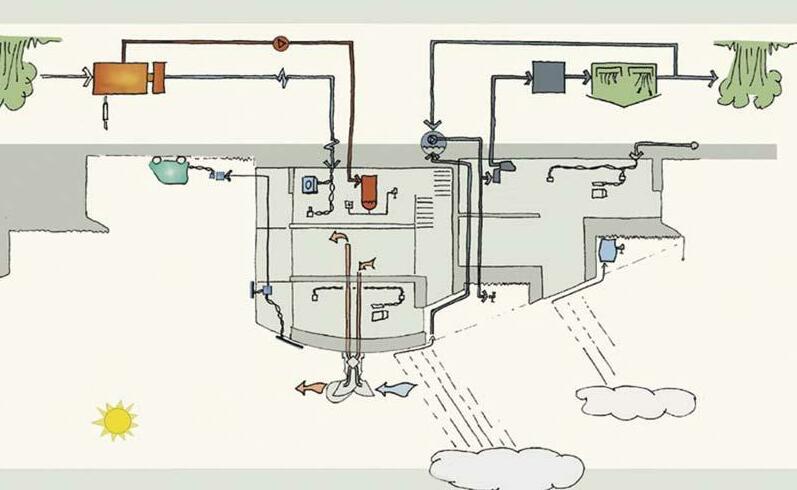A S I A - PA C I F I C : T R A N S F O R M AT I O N T O S U S TA I N A B I L I T Y The Asia-Pacific region wants both to continue to develop its economies and to be competitive with the rest of the world in the short and the long terms. Economic development at the expense of continued depletion or degradation of natural resources and the environment, however, is not sustainable. This list identifies possible options that can reduce the region’s demand on nature and improve development options for the region’s 3.4 billion people. Globally, the countries of Europe and North America must take substantial action to reduce their footprints. Asia-Pacific countries are rightly focused on developing their emerging competitive economies, but they may not succeed without maintaining their ecological assets.
●
●
Regional security and global collaboration
Effective management of natural resources and reduction of environmental degradation that are transboundary in nature can contribute to ‘regionalization’ and improve national security. The progress made in lifting the region’s poor out of poverty needs to recognize the strong links between poverty reduction and environmental quality. Tackling global environmental problems will require greater collaboration between states and that countries in the region take on a greater global leadership role by: ●
Increasing efforts to reduce poverty both within low-income countries and economically marginalized areas, especially among the rural poor, by ensuring that the environmental base on which they depend is not depleted.
14 ASIA-PACIFIC 2005: THE ECOLOGICAL FOOTPRINT
●
●
Encouraging bilateral and multilateral initiatives through which South–South countries, within and beyond the region, could create a ‘sustainable axis’. Under such initiatives energy efficiency solutions from one country could go one way, with systems for renewable energy travelling in the other, depending on competitive advantages and sustainable strategies. Improving regional natural resource management, for instance through increased and improved regional frameworks, such as the ASEAN Regional Action Plan on Trade in Wild Fauna and Flora 2005–2010. This collaboration on policy development and law enforcement could be extended throughout the region and greatly increase the sustainable management of the region’s wildlife trade. Ensuring best practice in integrated river basin management supports the needs of people and maintains ecosystem services, as well as biodiversity, and promotes collaboration between countries using a ‘whole of river’ approach to water management. Challenging the industrial countries to support ‘leaders’ in sustainability within the region through different means such as public procurement, regulation and cooperation, for example by twinning sustainable cities between North and South that support a two-way flow of ideas and innovations.
●
Using international fora to plan strategies that avoid technological transfers and leapfrog strategies from industrialized countries and multinationals that lead countries in Asia and the Pacific into unsustainable development patterns.
wind power in the world while the Philippines is the world’s second largest generator of geothermal energy. ●
Advancing innovation and know-how in sustainable energy technologies within the Asia-Pacific region using public-private partnerships. Such innovation could draw on experience within the region in such countries as China, India and Japan, as well as from the rest of the world.
●
New models of participation in energy sector decision making, involving collaboration between consumer organizations, local government, local communities and the private sector, can provide new methods of governance and new business models to support the technology shift.
●
Substantial and long-term investment in energy systems that reduce the region’s dependency on expensive fossil fuel imports. This is important both for countries that will struggle to compete on global markets for higher priced fuels and for those, such as India and China, with enormous oil requirements to meet the current and future demand from industry and their growing consumer societies.
Providing affordable, reliable and environmentally friendly energy to all
Environmental imperatives – such as tackling climate change and acid rain – coupled with social and economic factors including increasing fossil fuel prices, import-dependency risks and the provision of affordable energy services to the poor, provide a unique opportunity for a shift to sustainable energy. Factors that could contribute to making this change include: ●
●
Switching the sectoral focus from energy supply to provision of energy services can unlock huge efficiency potential across the region. Much can be learned from existing initiatives – Japan’s economy is already almost three times as energy efficient as that of the United States of America and almost eight times as efficient as China. Internalizing environmental costs using economic instruments – such as sulphur and carbon emissions trading and new regulations such as improved and enforced pollution controls and renewable energy targets – will drive new markets for clean technologies. Asia-Pacific region is already moving forward: China has the world’s most ambitious national renewable energy target, India is the fifth largest generator of
Provide accurate and relevant information for decision makers
Track all assets (economic, social and environmental) in order to better monitor consequences of present choices. Such options include: ●
Strengthening the ability of national



